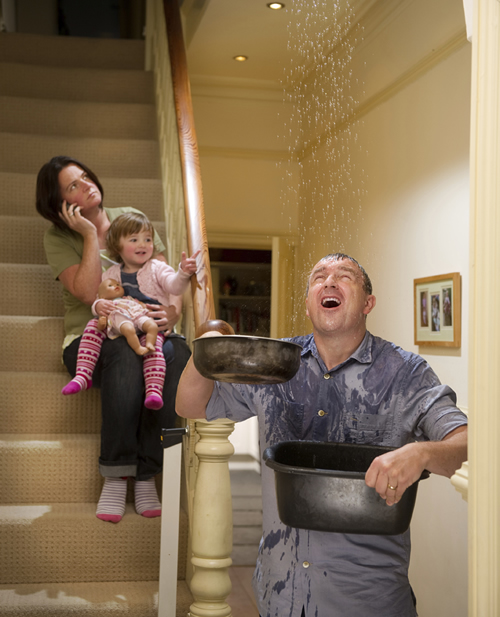Got a leak.
Need it stopped fast. Call us we can help.
What to do when your roof leaks.
- get a bucket.
- pick up area rugs.
- in extreme cases holes may need to be cut the wall to let air in and prevent the growth of mold.
(consult a Professional first!)
Should you replace or repair your roof?
Most leaks occur when the roof meets an adjoining roof or at the spots where a vent or chimney
is passing through the roof. As your roof ages it loses the oils in the the shingle and they become brittle, at this point wind can cause them to break and expose the under layer. The points of where the shingle is nailed to the roof
is now exposed to the elements, this is when small leaks happen that may not result in you seeing any water in the home or building but trapping moisture in the underlayment. Over time the underlayment will begin to rot, and weaken the roof, or even damage the rafters. The result can be a simple and quick installation now becomes a costly repair. This type of roof damage will require replacement.
Some indicators of when your roof may need replacing or repairs.
Missing or torn shingles expose the roof to water damage and rot, and make nearby shingles more susceptible to being blown away. Old shingles will curl, split and lose their waterproofing effectiveness. These weakened shingles are more likely to be blown away by wind gusts.
Rusted or missing flashing can result in a leaking roof. Flashing is the metal that surrounds chimneys, skylights and vent pipes and often is found in the valleys where roof sections meet. If the rest of the roof is in good shape and the flashing has not leaked, then a simple replacement of the flashing can be done. If the flashing has caused water to get under the surrounding roofing material, then not only will you need to replace the underlayment and top of the roof but the structure could be also weakened by rot the is not in plain view.
Check gutters, downspouts and splash pans for evidence of decay or damage. Broken pieces of paint and scraps of roofing may be visible. If your roof does not have proper drip edging then the ends of the eves will experience exposure to the elements, and ice build up that can cause serious damage.
Indoors, look for discolored plasterboard or cracked paint and peeling wallpaper. This is sure sign of water finding its way into the interior of your home. Heed this warning, if let to go on to long you may find that the damage will move from a simple repair or replacement of the roof, to rebuilding the walls of your home.
You have two main roof replacement options: You can either remove the old roof or put a new roof down on top of the old one. Putting a new roof down on top of the old one is almost always cheaper but often doesn't last as long—a typical situation where you get what you pay for. However, some considerations can make one choice better than the other. If you have more than two roofing layers already present, your roof can get heavy, cumbersome, and the sub-layers may end up rotting through to the point where your new roof is no longer stable. Roofing over the existing roof is more of a repair than a replacement. The reason is the roof will not last as long as the same material properly placed on good underlayment with a layer of ice shield, under it. But this is sometimes a good solution if you simply cannot afford a replacement roof and want something to hold you for a few years until you can afford to fix the roof properly.
Website by BSC Smart Sites.

